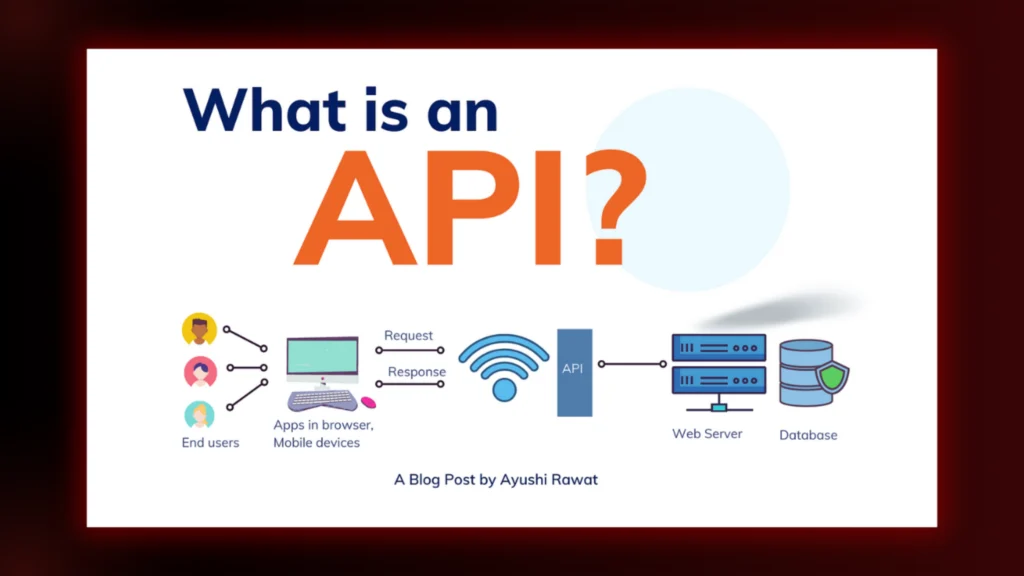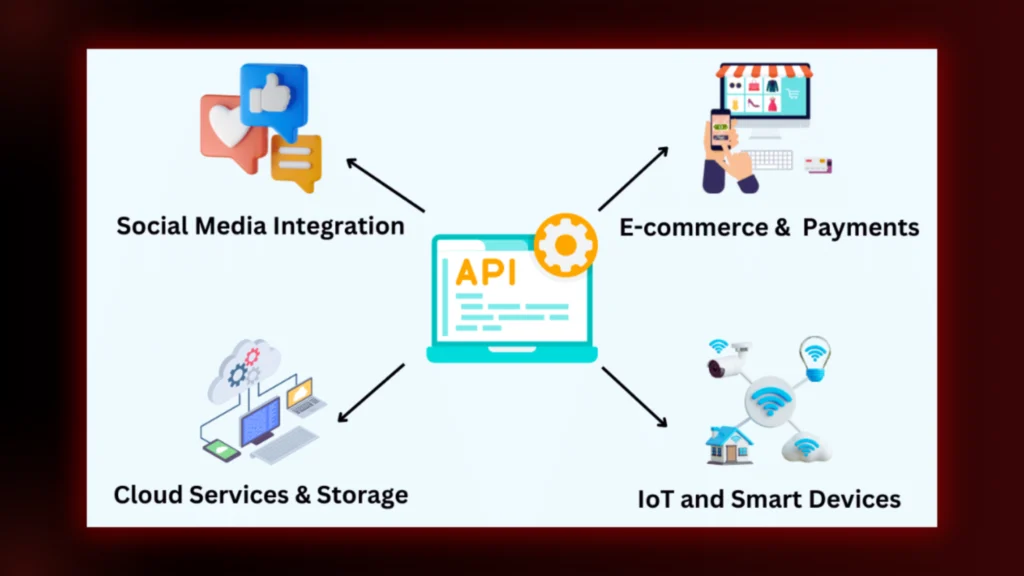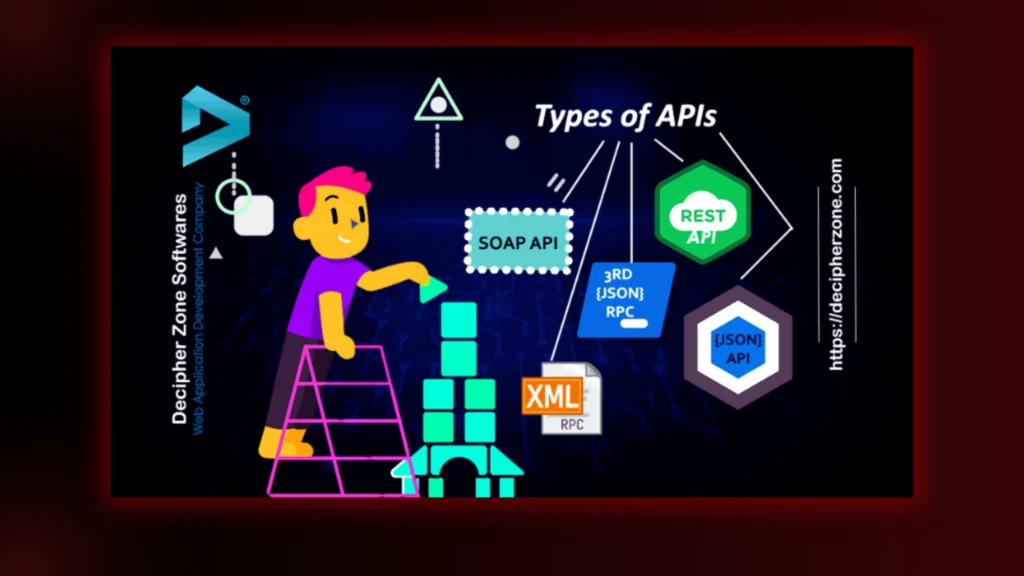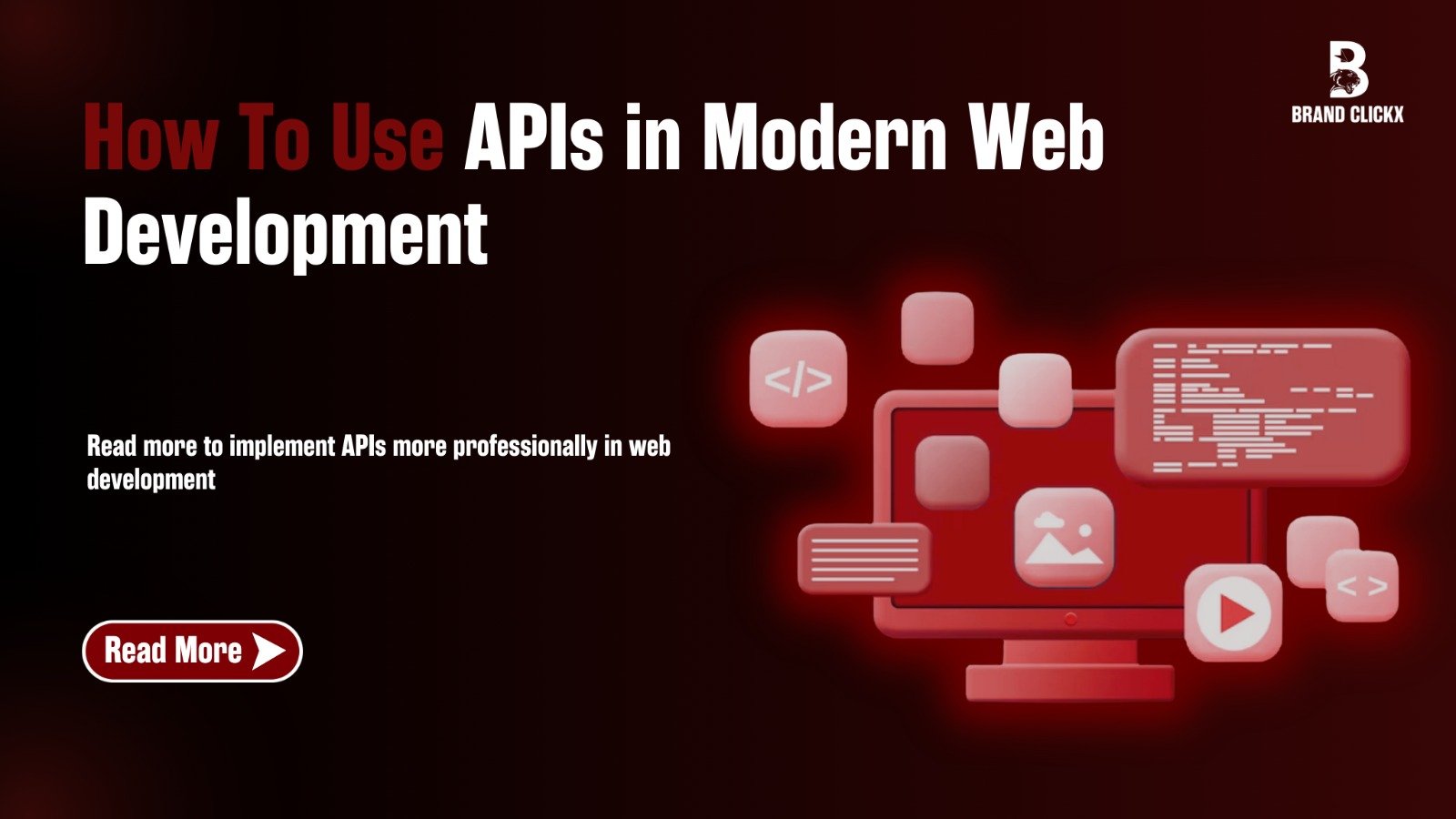APIs (Application Programming Interfaces) are the hidden heroes of modern web development, acting as the connective tissue that enables the complex ecosystems of applications and services we rely on daily.
Have you ever wondered how your weather app retrieves real-time data or how a website incorporates a payment system without building it from scratch?
The answer lies in exploring how to use APIs in modern web development. In this guide, we’ll explore how APIs build dynamic interlinking between applications, incorporate external data sources, and provide flexibility for custom integrations, all while upholding the security of transmitted information.
If you’re looking to streamline your development process, enhance your application’s functionality, and create seamless user experiences, understanding and using APIs is the key.
What is an API?

Before we explore the “how to use APIs in modern web development”, let’s grab a moment to demystify what they are, and why they’re crucial. APIs are intermediaries between software applications so they can exchange information with one another without having to share code.
They describe and standardize the forms which requests and responses take using known data formats and protocols. This standardization defines the rules that the applications could follow to interconnect functionally with each other.
An API can be thought of as a restaurant waiter. Your order (request) is taken by the waiter (API) to the kitchen (application), and your meal (response) is then put together and brought back by the waiter (API). An API is more of an analogy in that it acts as a bridge between applications that deal in interactions and exchange information as well as functionality and does so without the knowledge of the end user.
Read more about schema markup for SEO
Why are APIs Important in Modern Web Development?
- Seamless Integration of Third-Party Features and Services: APIs form the base for web development in the modern day requiring minimal efforts to integrate services from third parties. If these integrations include the inclusion of payments social media or maps, APIs make such features available without having to manually develop them. This seamless integration accelerates the process of development towards web applications, which improves creature power and range.
- Saves Time and Effort: With APIs, the complicated functions that take time and effort to add are significantly simplified. So, their implementation by developers requires reduced time and effort. Rather than building features from scratch, developers can use API Interface to improve the speed of the development cycle and focus the development resources, they can concentrate on added value creation in apps.
- Scalability: Scalability is always essential to advanced software development. Scalability ensures that your application can easily handle higher loads by connecting with more stable, scalable external services via APIs. This scalability makes sure that the user base can be expanded so that your application can adapt
How Do APIs Work?
Using an API, applications exchange information with an external component in solving problems, and through this, they communicate with each other by defining many procedures that solve the problems. The code goes over all of the APIs that act as mediators, which translate the code between the different systems to get the data and function between systems.

Here’s a step-by-step breakdown:
- Request: The client application sends a request to the API endpoint (a specific URL) for information or action. This request includes any necessary parameters, such as data or instructions.
- Processing: The API receives the request and processes it based on its defined documentation and guidelines.
- Response: The API sends a response back to the client application, usually in a structured format like JSON or XML. This response contains the requested data or the result of the action.
For instance, if you create a news article by using an application from a social media-based platform and share it on your profile over the application used, this action will involve an API that handles the sending data of your article to their platform where it will appear in public as shared.
Types of APIs
There are several types of APIs, each with its own characteristics and use cases:

- REST (Representational State Transfer): A widely used architectural style that uses standard HTTP methods (GET, POST, PUT, DELETE) to manage resources. RESTful APIs are stateless, meaning each request from the client to the server must contain all the information needed to understand the request.
- SOAP (Simple Object Access Protocol): A protocol that uses XML for message format and relies on other protocols such as HTTP, SMTP, or TCP for message transmission. SOAP APIs are more rigid and complex than REST APIs but provide more security features.
- GraphQL: A query language for your API and a server-side runtime for executing those queries. GraphQL allows clients to request specific data, reducing over-fetching and improving performance.
Know how to optimize web structure
How to Use APIs in Your Web Development Projects
- Find the Right API: Identify the specific functionality you need for your project. Search for APIs that offer these features.
- Read the Documentation: API documentation is your best friend. It provides instructions on how to make requests, what parameters to include, and how to interpret the responses.
- Authentication: Many APIs require authentication to ensure secure access. This often involves obtaining an API key or using OAuth to authorize your application.
- Make Requests: Use HTTP methods (e.g., GET, POST) to send requests to the API endpoint. Include any required parameters in the request.
- Handle Responses: Parse the API response, typically in JSON or XML format, and extract the data you need.
- Error Handling: Implement error handling to manage potential issues such as invalid requests or server errors.
Examples of APIs in Action
- Google Maps API: Embed interactive maps into your website or application.
- Twitter API: Access Twitter data, post tweets, and integrate Twitter functionality.
- Stripe API: Integrate payment processing into your e-commerce platform.
- Weather APIs: Retrieve real-time weather data for your application.
Best Practices for Using APIs
- Secure Your API Keys: Protect your API keys to prevent unauthorized access.
- Handle Errors Gracefully: Implement robust error handling to provide a better user experience.
- Cache Data: Cache API responses to reduce the number of requests and improve performance.
- Monitor API Usage: Track your API usage to identify potential issues and optimize performance.
- Stay Updated: Keep up with API updates and changes to ensure your application remains compatible.
Read more about website personalization techniques
Final Thoughts
For web development today, APIs are an indispensable tool. They let developers save some time and effort, and integrate third-party services, but at the same time build scalable applications. If we can make efforts to find out and understand how APIs work and follow best practices, it will help to create innovative and efficient web solutions.
Whether you are creating a simple website or a big application, APIs speed up and make it easier for you to build it.
For those looking to enhance their brand’s online presence, consider exploring the services offered by Brandclickx for expert digital marketing solutions.
Contact us to know the details!
FAQs
1. What does “How to use APIs in modern web development” mean?
How to use APIs in modern web development refers to the process of integrating third-party or custom-built APIs to enhance web applications, enabling seamless data exchange and functionality expansion.
2. Why is it important to learn how to use APIs in modern web development?
Understanding how to use APIs in modern web development is crucial because APIs allow developers to integrate external services, optimize performance, and create dynamic, data-driven applications.
3. What are the common types of APIs used in modern web development?
When exploring how to use APIs in modern web development, developers typically work with RESTful APIs, GraphQL APIs, SOAP APIs, and WebSockets for real-time communication.
4. How do authentication methods impact how to use APIs in modern web development?
Security is a key aspect of how to use APIs in modern web development. Common authentication methods include API keys, OAuth, JWT (JSON Web Tokens), and Basic Authentication.
5. What tools can help in learning how to use APIs in modern web development?
To effectively grasp how to use APIs in modern web development, developers use tools like Postman for API testing, Swagger for API documentation, and various SDKs provided by API providers.



